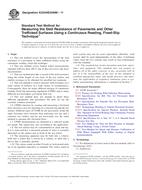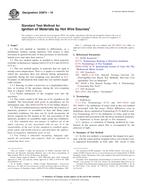1.1 This test method covers the determination of the shear properties of high-modulus fiber-reinforced composite materials by clamping the ends of a V-notched specimen between two pairs of loading rails. When loaded in tension, the rails introduce shear forces into the specimen through the specimen faces. In comparison, the specimen of Test Method D 5379/D 5379M is loaded through its top and bottom edges. Face loading allows higher shear forces to be applied to the specimen, if required. Additionally, the present test method utilizes a specimen with a larger gage section than the V-notched specimen of Test Method D 5379/D 5379M. In both test methods, the use of a V-notched specimen increases the gage section shear stresses in relation to the shear stresses in the vicinity of the grips, thus localizing the failure within the gage section while causing the shear stress distribution to be more uniform than in a specimen without notches. In comparison, Test Method D 4255/D 4255M utilizes an unnotched specimen clamped between two pairs of loading rails that are loaded in tension. Also in contrast to Test Method D 4255/D 4255M, the present test method provides specimen gripping without the need for holes in the specimen.
The composite materials are limited to continuous-fiber or discontinuous-fiber-reinforced composites in the following material forms:
1.1.1 Laminates composed only of unidirectional fibrous laminae, with the fiber direction oriented either parallel or perpendicular to the fixture rails.
1.1.2 Laminates of balanced and symmetric construction, with the 0 direction oriented either parallel or perpendicular to the fixture rails.
1.1.3 Laminates composed of woven, braided, or knitted fabric filamentary laminae.
1.1.4 Short-fiber-reinforced composites with a majority of the fibers being randomly distributed.
1.2 The values stated in either SI units or inch-pound units are to be regarded separately as standard. Within the text the inch-pound units are shown in brackets. The values stated in each system are not exact equivalents; therefore, each system must be used independently of the other. Combining values from the two systems may result in nonconformance with the standard.
1.3 This standard does not purport to address all of the safety concerns, if any, associated with its use. It is the responsibility of the user of this standard to establish appropriate safety and health practices and determine the applicability of regulatory limitations prior to use.
Product Details
- Published:
- 05/15/2005
- Number of Pages:
- 15
- File Size:
- 1 file , 960 KB


